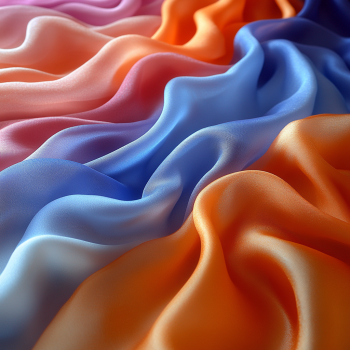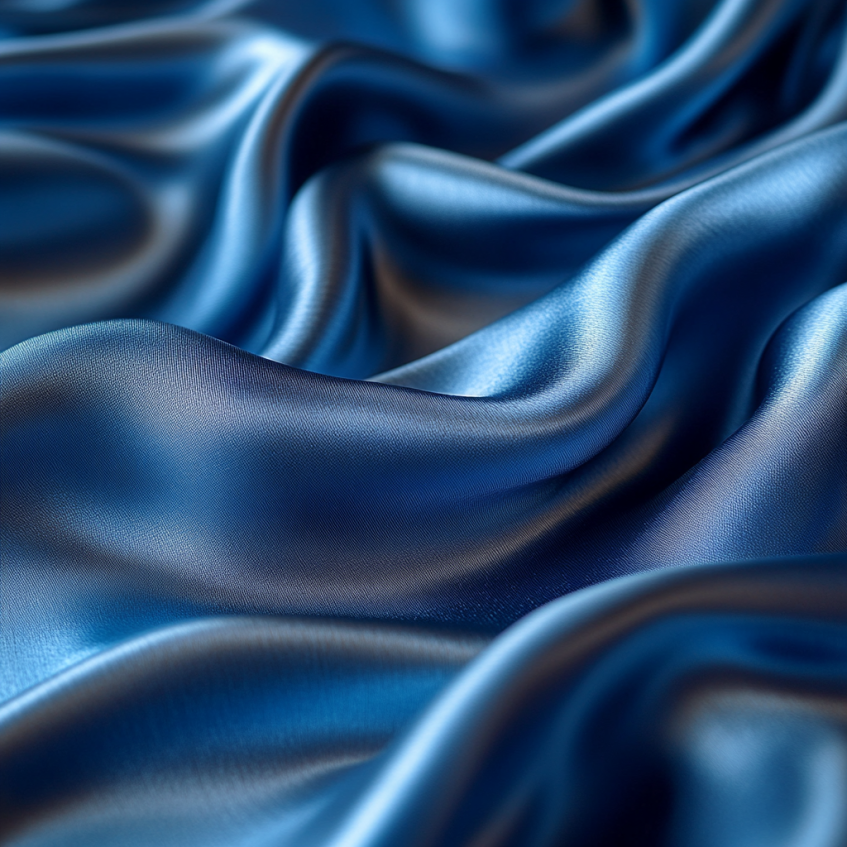Hey there, textile enthusiasts! If you’re diving into the world of fabrics, you’ve probably come across terms like FDY and DTY. These acronyms might sound like tech jargon, but they’re key to understanding some of the most versatile materials in the textile industry. Today, we’re zooming in on FDY fabric—what it is, why it’s awesome, and how it stacks up against its stretchy cousin, DTY. Whether you’re a designer, manufacturer, or just curious, this guide’s got you covered with insights, practical tips, and a sprinkle of visual flair.
FDY, or Fully Drawn Yarn, is a type of polyester filament yarn that’s stretched to its max during production, giving it high strength, smoothness, and a glossy finish. Unlike other yarns, FDY is fully oriented, meaning its molecular structure is aligned for stability and durability. The result? Fabrics that feel sleek, look polished, and hold up like champs.
FDY fabric is woven or knitted from these yarns, making it a go-to for everything from silky sarees to durable upholstery. Its low stretch and high tensile strength make it ideal for applications where you want structure over elasticity.
FDY’s high-strength molecular alignment makes it less prone to pilling or fraying compared to other synthetic fabrics, which is why it’s a favorite for long-lasting home textiles like curtains and bed linens.

Let’s break down what makes FDY fabric stand out:
Property | Description |
|---|---|
Strength | High tensile strength (5.0-7.0 g/denier) ensures durability and resistance to wear. |
Texture | Smooth and glossy, often mimicking silk for a luxurious feel. |
Elasticity | Low stretch (elongation ~40%), perfect for structured fabrics. |
Shrinkage | Low shrinkage due to high-speed spinning (1200-3000 m/min), ensuring stability. |
Dyeability | Excellent dye uptake, allowing vibrant and uniform colors. |
Luster | Available in bright, semi-dull, or full-matte finishes, depending on additives like TiO2. |
If FDY is the polished, structured sibling, DTY (Draw Textured Yarn) is the soft, stretchy one. DTY undergoes a texturing process that adds crimps, loops, or curls, giving it a fluffy, elastic feel. Here’s a quick comparison to clarify:
Feature | FDY Fabric | DTY Fabric |
|---|---|---|
Texture | Smooth, silky, glossy | Soft, fluffy, slightly matte |
Elasticity | Low (minimal stretch) | High (20-30% stretchability) |
Strength | High tensile strength | Moderate strength |
Common Uses | Satin, chiffon, upholstery, curtains | Activewear, leggings, stretchy knits |
Production | Fully drawn at high speeds | Textured with twisting and heat-setting |
Choosing between FDY and DTY depends on the end product. If you’re designing a flowy, elegant dress that needs to hold its shape, FDY’s your pick. But for yoga pants or cozy blankets, DTY’s stretch and softness win.

FDY fabric’s versatility is its superpower. Here’s where it’s making waves:
Fashion Fabrics: Think silk-like sarees, blouses, and evening gowns. FDY’s glossy finish gives a luxurious vibe without the hefty price tag of real silk.
Home Textiles: Curtains, bed linens, and upholstery love FDY for its durability and low shrinkage. It’s especially great for heavy-duty use in hotels or homes.
Industrial Uses: FDY’s strength makes it a star in conveyor belts, geotextiles, and even automotive textiles like car seat linings.
Sportswear & Lingerie: High-end sportswear and undergarments use FDY for its smooth feel and durability, especially in non-stretch designs.
FDY’s low shrinkage (thanks to its high-speed spinning process) makes it a top choice for manufacturers who need consistent fabric dimensions after washing or dyeing, reducing production defects.
To keep readers engaged and boost SEO, here are some content expansion ideas based on search intent (informational, commercial, and navigational):
Sustainability Angle: Explore eco-friendly FDY options, like recycled FDY with GRS 4.0 certification. Discuss how brands are using sustainable FDY in fashion and home textiles to appeal to green-conscious consumers.
Care Tips: Offer a guide on washing and maintaining FDY fabrics to preserve their glossy finish and durability. For example, recommend cold water washes to maintain low shrinkage.
Design Trends: Highlight how FDY is trending in 2025 fashion—think bold, glossy prints for eveningwear or minimalist home decor with FDY-based linens.
Technical Deep Dive: Explain how FDY’s denier and filament options (e.g., 75D/36F, 150D/48F) affect fabric weight and texture, helping designers choose the right specs.
Searchers often want practical advice alongside technical details. Including care tips or design inspiration can turn a technical article into a go-to resource for both pros and hobbyists.
Denier/Filament | Application | Key Benefit |
|---|---|---|
40D/24F | Lingerie, chiffon | Ultra-light, silky feel |
75D/36F | Sarees, blouses | Balanced strength and gloss |
300D/96F | Upholstery, geotextiles | Heavy-duty durability |
FDY fabric is a powerhouse for projects needing strength, stability, and a premium look. Its low stretch and high durability make it a staple for structured garments and heavy-duty textiles. Plus, its dyeability means you can go wild with colors without worrying about fading. Whether you’re crafting a runway-worthy gown or a tough industrial textile, FDY’s got your back.
For businesses, FDY’s cost-effectiveness (due to low production defects and stable quality) makes it a smart investment for scaling textile production without sacrificing quality.
FDY fabric is more than just a textile—it’s a game-changer for creating durable, glossy, and versatile products. From fashion to industrial applications, its strength and smooth finish make it a standout choice. Compared to DTY, it’s less about stretch and more about structure, giving you options depending on your project’s vibe. So, next time you’re picking fabrics, ask yourself: do I want sleek and sturdy (FDY) or soft and stretchy (DTY)? Either way, you’re now armed with the knowledge to make the right call.